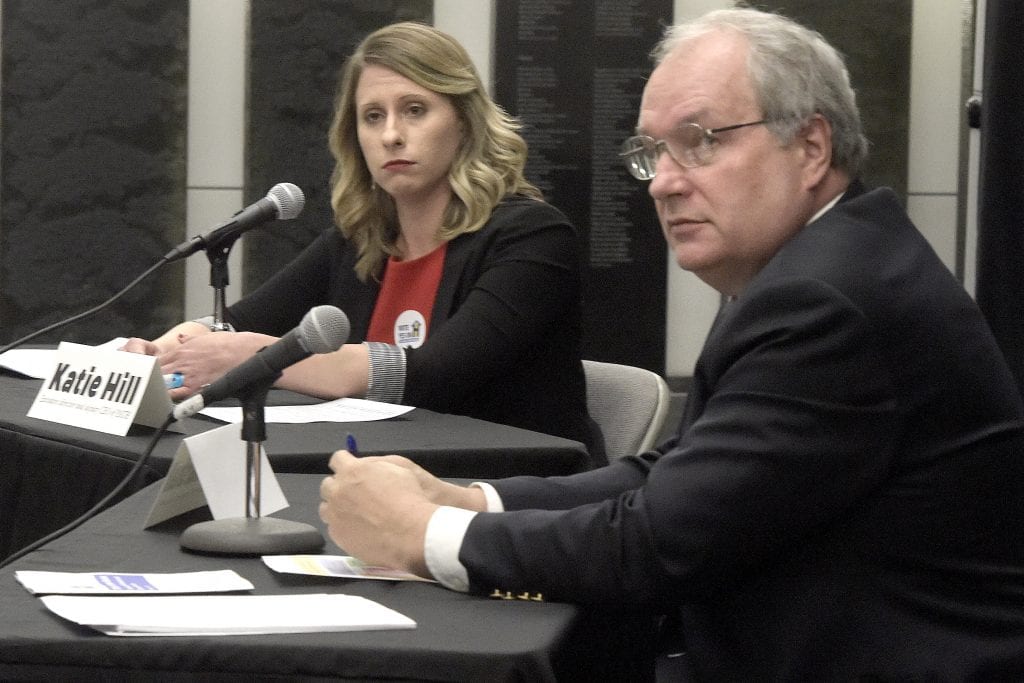I attended the Measure H debate co-sponsored by The Signal and College of the Canyons last week and left with more unanswered questions than answered ones. Due to time restrictions, I was unable to present my question to the panel – hence this letter to the editor.
The common thread throughout the evening was the need for affordable housing to help reduce homelessness. It was even stated that some homeless people had jobs, along with gym memberships, so they could shower, but they could not afford a place to live due to high rents.
The city of Los Angeles mandated a portion of all new housing projects include affordable housing. Santa Clarita does not require this. Santa Clarita does, however, want a portion of the proposed ¼-cent sales tax if it passes.
That tax hike would drive our sales tax rate in Santa Clarita to 9 percent on all taxable goods.
I believe that our elected officials should be held accountable for these problems and do something other than always asking for a tax increase, which has never solved any problem.
If builders claim it costs them $80,000 or more before a shovel hits the dirt, then perhaps the city could take some cuts on permit fees to help with affordable housing so people can purchase homes.
Cities and elected officials need to be held more accountable for their decisions and do more to govern and help those people who cannot help themselves.
During the debate, no one convinced me that Measure H will do anything to eradicate homelessness, now or in the immediate future, with no government changes.
Elaine Ballace
Santa Clarita
Santa Clarita responds:
The city of Santa Clarita shares concerns regarding the needs of our homeless and lower-income residents and has done a number of things to address both affordable housing and homeless issues.
There are affordable housing units available for both seniors and all-age households. The city assisted in the development of some of these affordable housing options, and some existed prior to the city’s incorporation.
You can see the list of these at www.santa-clarita.com/housing. Click on Affordable Rental Housing for all-age housing, and on Senior Affordable Housing for senior housing.
The city has assisted in the development of new affordable housing as well. City staff worked with Habitat for Humanity on a zone change/General Plan amendment for a project in the Centre Pointe area. This facilitated the housing project which will provide affordable housing for 78 veterans and their families.
The city also contributed more than $4 million and a significant amount of staff resources to the development of a new affordable apartment building for families, tentatively named Three Oaks Apartments, located in Newhall.
This development, owned and operated by a non-profit affordable housing developer, is a 30-unit development offering two- and three-bedroom units to residents with household incomes at or below 50 percent of the area median income. Rents are anticipated to be approximately $500 – $750 per month.
This represents a significant level of affordability for our lower-income families. The project is anticipated to be open in June or July 2017. Information on the Three Oaks Apartments can be found at www.santa-clarita.com/housing.
The city has been doing a significant amount of outreach to connect the homeless with social service providers. Each month, city staff, along with members of the Sheriff’s Department and non-profit organizations, go to different areas where homeless people may live.
This is done in an effort to clean debris from property and inform homeless people of the services available to them. With the recent cold temperatures and significant rain, these outreach efforts also provide a direct way to urge the homeless to take shelter.
Finally, the city continues to support our local homeless services provider, Bridge To Home. Since 2013, the city has used federal funds received from the federal Department of Housing and Urban Development to grant more than $250,000 in the last five years to Bridge To Home to provide a variety of services to the homeless population.
In addition, the city has leased property to Bridge To Home at a cost of $1 per year so the service provider can operate the area’s cold-weather winter homeless shelter.
In addition, city staff regularly meets with non-profit organizations in the community to address the many issues faced by the homeless.
The city continues to explore options to make more affordable housing and different housing types available to our residents.







